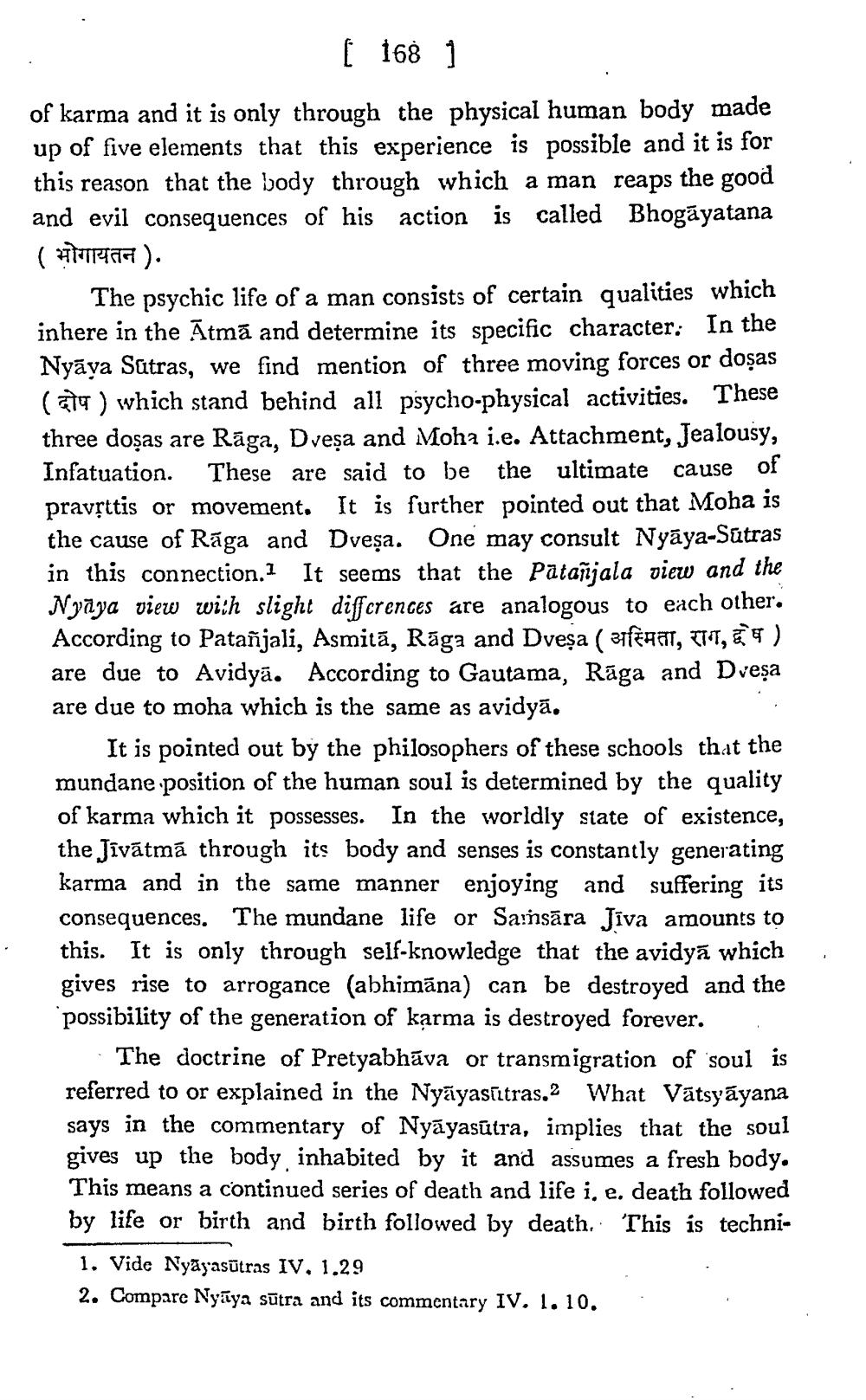________________
[ 168 1
of karma and it is only through the physical human body made up of five elements that this experience is possible and it is for this reason that the body through which a man reaps the good and evil consequences of his action is called Bhogayatana ( भोगायतन ).
The psychic life of a man consists of certain qualities which inhere in the Atma and determine its specific character. In the Nyaya Sutras, we find mention of three moving forces or doșas (a) which stand behind all psycho-physical activities. These three dosas are Raga, Dveṣa and Moha i.e. Attachment, Jealousy, Infatuation. These are said to be the ultimate cause of pravṛttis or movement. It is further pointed out that Moha is the cause of Raga and Dvesa. One may consult Nyāya-Sutras in this connection. It seems that the Patanjala view and the Nyaya view with slight differences are analogous to each other. According to Patañjali, Asmitā, Raga and Dvesa (3⁄4fè, WI, ¶ ) are due to Avidya. According to Gautama, Raga and Dveşa are due to moha which is the same as avidya.
It is pointed out by the philosophers of these schools that the mundane position of the human soul is determined by the quality of karma which it possesses. In the worldly state of existence, the Jivātmā through its body and senses is constantly generating karma and in the same manner enjoying and suffering its consequences. The mundane life or Samsara Jiva amounts to this. It is only through self-knowledge that the avidya which gives rise to arrogance (abhimana) can be destroyed and the possibility of the generation of karma is destroyed forever.
The doctrine of Pretyabhava or transmigration of soul is referred to or explained in the Nyayasutras. What Vatsyayana says in the commentary of Nyayasutra, implies that the soul gives up the body inhabited by it and assumes a fresh body. This means a continued series of death and life i, e. death followed by life or birth and birth followed by death. This is techni
1. Vide Nyayasūtras IV. 1.29
2. Compare Nyaya sutra and its commentary IV. 1. 10.




